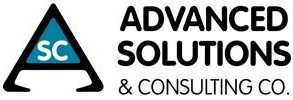Manufacturing is a complex process that tends to be fraught with inefficiency. Whether because of poorly maintained machines or tools or inadequate utilization of expensive capital equipment, many manufacturers face increased costs due to waste, scrappage, and higher prices. The biggest challenges come from issues that are difficult to identify and correct, such as timing errors between upstream components and downstream jobs or poorly timed start-ups of jobs that rely on other available materials.
Because of these issues, many manufacturers struggle to stay competitive in today’s global market. However, it’s possible to overcome these challenges and create a more efficient manufacturing process to help your company stay ahead of the competition with the right approach and tools.
Reasons Your Production Line is Inefficient
Your production line is likely inefficient for several reasons, including:
- Poorly maintained machines or tools
- Start-and-stop jobs
- Inadequate utilization of expensive capital equipment
- Timing errors between upstream components and downstream jobs
- Poorly timed start-ups of jobs that rely on other materials being available
How Can Automation Help?
By automating key processes and tasks, you can eliminate many of these inefficiencies and improve the efficiency of your production line. Automation can help your business:
– Reduce manual errors
– Free up employees to focus on more value-added tasks
– Improve output and quality
– Reduce costs
– Better use expensive capital equipment
Acumatica can help you automate your production line to improve efficiency and quality while reducing costs. For example, with Acumatica, you can access:
- Artificial Intelligence (AI) and Machine Learning – Traditional manufacturing processes are often redundant and predictable. They require manual intervention. However, with Acumatica’s AI and ML, current and future processes can be partially or wholly automated—saving time and improving data accuracy. In addition, the platform is scalable to accommodate the ever-changing needs of manufacturers.
- Optimal material availability – To ensure optimal inventory levels, you can analyze demand forecasts and use Materials Requirement Planning (MRP) systems to predict future production requirements. By identifying critical material issues and using hard allocations, manufacturers can ensure they have the proper materials when they need them. This approach ensures that jobs are on time and helps to minimize waste and reduce costs. By focusing on material availability, manufacturers can achieve greater efficiency and stay ahead in today’s competitive marketplace
- Automatic Transactions – Manual transaction processing can be both time-consuming and error-prone. One way to improve efficiency and accuracy is to automate transactions using backflushing. Backflushing autogenerates material issues and labor entry transactions based on information gathered from the shop floor. Your business can capture information using bar codes, RFID tags, and warehouse automation technologies. By automating transactions, manufacturing companies can improve their efficiency and accuracy, freeing up time for other tasks.
- Manufacturing Insights – Another critical area in manufacturing is the management of job costing, including both planned cost and actual cost variances. With accurate reporting on these metrics, businesses can better understand how spending decisions impact profitability. Effective capacity scheduling is essential for maximizing capital equipment usage. Manufacturers can ensure that their production cycles run efficiently by tracking machine and work center utilization rates and using finite capacity scheduling techniques.
If you’re looking for a way to improve the efficiency of your production line, consider investing in Acumatica’s manufacturing automation platform. With its scalable architecture and ability to integrate with AI and machine learning technologies, Acumatica can help take your business to the next level. Contact us today to learn more about how we can help you and your business.
Additional Manufacturing Resources
9 Features Every Manufacturer Needs in their ERP Software
9 Ways You Can Drive Manufacturing Growth in the Digital Economy
Stuck in the Middle: Why Job Shops Get Overlooked By ERP and MRP

